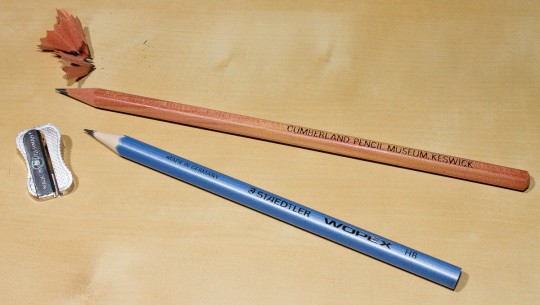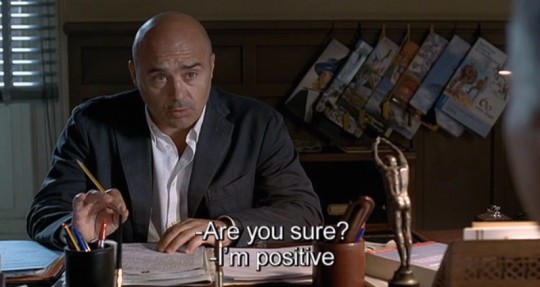A trip to the museum …and a new sharpener
Thank you for the anniversary comments. I was hoping to get this blog post out by 21 November, the third birthday of this blog, but unfortunately I didn’t find the time. Anyway here’s the first blog post in the fourth year of Bleistift.

The museum
Considering that I don’t live too far away from the Cumberland Pencil Museum, both the Museum and I are in North West England, it took me quite a while to get there – but this May my wife and I finally made the trip. The weather was fantastic and the Museum managed to convey a lot of information despite being rather small. Admission is £4 (~$6.40; €4.95), but comes with a ‘free’ souvenir pencil.

There were explanations how pencils are made and you could admire historic pens and pencil and machines. I will only show one photo from inside the museum as I haven’t asked whether they permit the posting of photos taken in the museum on the web.

 There was a pencil labelling machine, too, but unfortunately it was broken at the time …I would have really liked to get some personalised pencils. A subsequent enquiry regarding the pencil labelling machine was not as helpful as it could have been, so I decided not to chase this up further. Maybe the machine will work again if I go there again in the future.
There was a pencil labelling machine, too, but unfortunately it was broken at the time …I would have really liked to get some personalised pencils. A subsequent enquiry regarding the pencil labelling machine was not as helpful as it could have been, so I decided not to chase this up further. Maybe the machine will work again if I go there again in the future.

Obviously I couldn’t resist stocking up on pencils in the museum shop. The shop’s selection is aimed at artists, but if you use pencils for office purposes you’ll also find nice products. Pencils are from Derwent, who are running the museum, but you can find pencil related items from other brands.

The sharpener
One of the products I picked up in the museum is the Eisen 060 [1]Eisen changed their web site. The pages are only available in German at the moment, so unfortunately all links to Eisen are to their German product page. . I like this sharpener because the rounded corners make it “different” while still maintaining the classic wedge shape look [2]Eisen’s classic wedge sharpener is the 040.. I paid £1 (~$1.60; €1.25). This sharpener’s body and blade were both made in Baiersdorf near Nuremberg. The 060’s produced in the last three years still feature the blade made in Baiersdorf, like all Eisen sharpeners, but the body is now made in Taicang near Shanghai. Performance of this little sharpener is very good, too.

| Technical Information (adapted from Pencil Revolution) | |
| Type | wedge / blade |
| Material | Magnesium-alloy |
| Shavings Receptacle | None |
| Angle | 24° – 25° [3]I measured 25°, the official figure is 24° which is also the one I used for in the list of sharpeners |
| Markings | “MADE IN GERMANY” (blade); Eisen logo plus “Made in Germany” (body) |
| Place of Manufacture | Baiersdorf (Germany) and Taicang (China) |

Giveaway
As this is a (belated) birthday blog post I am giving away an Eisen 060, some British-made Staedtler pencils and possible a few other small items I can find. I am happy to send the prizes to any country as long as Royal Mail doesn’t refuse to send them there. I will use random.org to get a random number and the author of the corresponding comment will get the price (unless I am the author or the comment is definitely spam). To take part please leave a comment for this blog post before Friday, 30th September 2011, 23:59 UTC.
Prices: May 2012
Exchange rates: November 2012
I would like to thank Stephan Eisen for providing additional information regarding the Eisen 060.
References
| ↑1 | Eisen changed their web site. The pages are only available in German at the moment, so unfortunately all links to Eisen are to their German product page. |
|---|---|
| ↑2 | Eisen’s classic wedge sharpener is the 040. |
| ↑3 | I measured 25°, the official figure is 24° which is also the one I used for in the list of sharpeners |
A trip to the museum …and a new sharpener Read More »


